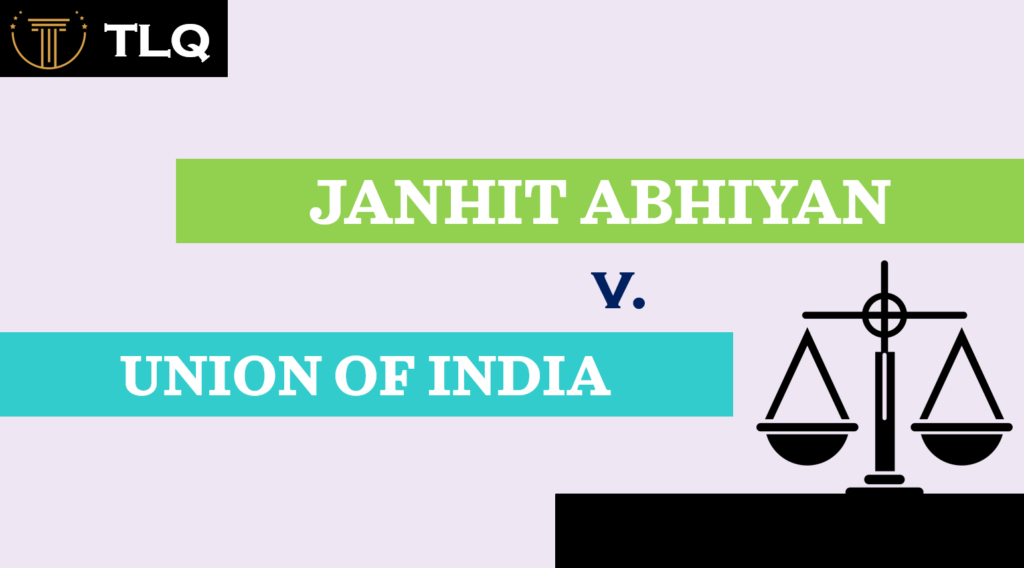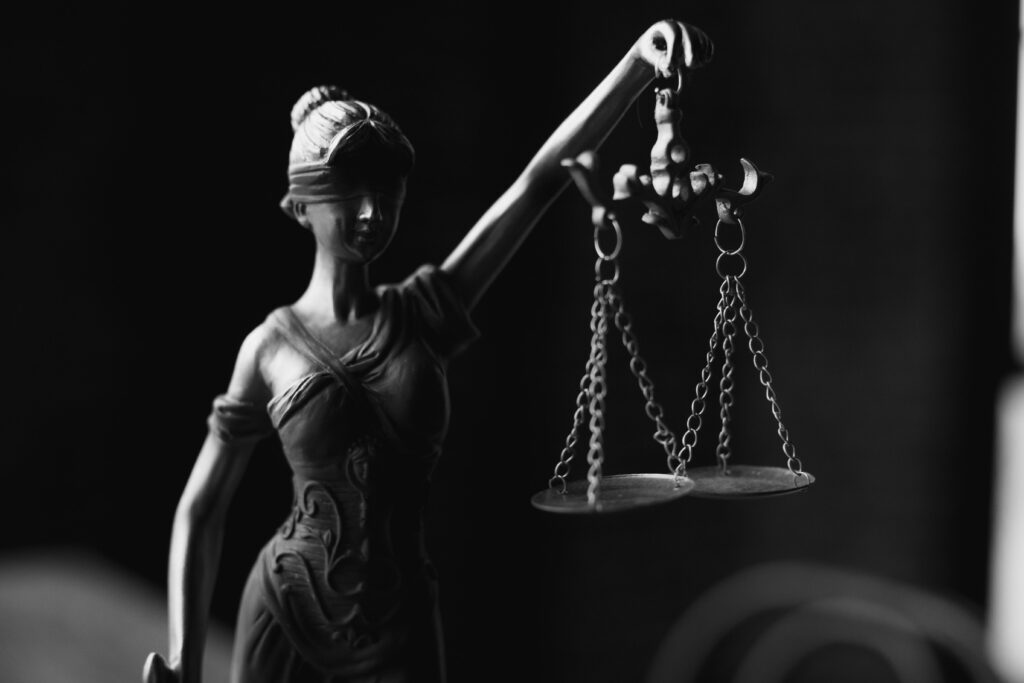Published On: October 31st 2025
Authored By: Mahek Zubeariya
Kalinga University
Abstract:
The rapid pace of modern development has often clashed with the fundamental necessity for environmental protection. In India, the judiciary has taken a proactive role in resolving this conflict through a groundbreaking interpretation of the constitutional “right to life” under Article 21 of the Indian Constitution. This article explores the transformative role of the Indian judiciary in environmental law, focusing on how the right to life under Article 21 of the Constitution has been expanded to include the ‘Right to a Clean and Healthy Environment’, thereby transforming environmental protection into a core constitutional value. Specifically, the article examines how the courts have enforced the “precautionary principle” and the “polluter pays principle” to balance economic growth with environmental protection. This judicial approach has created a powerful legal framework that holds corporations and the state accountable for ecological harm, ensuring that development is pursued responsibly for the benefit of both present and future generations.
Introduction
In recent years, the close connection between human rights and environmental protection has become a central point of discussion in modern law. For decades, the traditional interpretation of basic human rights often focused on civil and political freedoms, However, by the late 20th century, courts around the world began to recognise that a healthy environment is a fundamental part of the right to life. This traditional viewpoint is no longer sufficient in a world facing modern complex issues like pollution, depletion of natural resources and climatic change. It is essential to re-evaluate our legal systems to address these problems. The absence of a direct, enforceable environmental right in many countries, including India, has created a significant legal gap, leaving a void. In India, the judiciary met this legal challenge with a bold and transformative response. By recognising the intricate link between environmental quality and fundamental rights to life, the Supreme Court took a proactive and powerful role in bridging this legal gap. Through a series of important court decisions, the judiciary has not only broadened the basic right to include the ‘Right to a Clean Environment’ but has also carefully included Principles of Sustainable Development. This article will trace the remarkable judicial voyage of expanding the scope of Article 21 of the Indian Constitution to include environmental rights and explores how the judiciary has effectively utilized this constitutional provision to mandate and enforce the principles of sustainable development, thereby creating a robust legal framework for ecological protection.
Article 21: A New Foundation for Environmental Law- From ‘Life’ to ‘Lived with Dignity’
Article 21 is a very important part of the Indian Constitution. For a long time, it was simply understood as a person’s right to life and freedom which has been transformed by the Indian judiciary into a powerful and multifaceted instrument for social and economic justice. The right to life, as interpreted by the Supreme Court, is not merely about a person’s physical existence but also about the quality of that life. This judicial interpretation means that any action whether by the state, an industry, or an individual – that threatens environmental quality can be challenged as a violation of a fundamental right.
One of the earliest and most pivotal pronouncements was in the case of Rural Litigation and Entitlement Kendra v. State of Uttar Pradesh (1985), popularly known as the Dehradun Quarrying Case. In this case, the court, for the first time, halted quarrying operations in the Mussoorie Hills, recognizing the public’s right to a healthy environment. Though the term “right to a healthy environment” was not explicitly articulated as a part of Article 21, the seeds of this idea were sown.
The decisive leap was made in Subhash Kumar v. State of Bihar (1991), where the Supreme Court declared that the “right to life” guaranteed under Article 21 includes the right to the enjoyment of pollution-free water and air for full enjoyment of life. The court held that if a citizen’s right to a pollution-free environment is violated, they can approach the Supreme Court under Article 32 of the Constitution for its enforcement. This judgment cemented the constitutional foundation of environmental rights in India and provided a powerful tool for environmental litigation.
Subsequent rulings, such as Vellore Citizens Welfare Forum v. Union of India (1996), further reinforced this position, with the court noting that the right to a clean environment is a basic human right. This judicial activism effectively elevated environmental protection from a mere administrative concern to a constitutional imperative, giving citizens a direct route to seek redress for environmental degradation.
Sustainable Development: A Balancing Act and a Guiding Principle
The concept of sustainable development, first popularized by the Brundtland Commission Report in 1987 as “development that meets the needs of the present without compromising the ability of future generations to meet their own needs,” is inherently a balancing act between environmental conservation and economic development. The Indian judiciary, while expanding the scope of Article 21, was acutely aware of the need to reconcile these two often-conflicting objectives. The Supreme Court’s jurisprudence, therefore, began to incorporate the principles of sustainable development into its rulings to ensure that development projects are carried out responsibly and do not cause irreversible environmental harm.
The landmark judgment in Vellore Citizens Welfare Forum v. Union of India (1996) is a prime example of this integration. The court, while addressing the issue of pollution caused by tanneries in Tamil Nadu, explicitly recognized the principle of sustainable development as a part of the “customary international law” and, therefore, a component of Indian law. It articulated two key principles that form the pillars of sustainable development: the “precautionary principle” and the “polluter pays principle.”
The Precautionary Principle holds that environmental measures must be taken even if there is no scientific certainty about the cause-and-effect relationship between a particular activity and environmental degradation. This doctrine states that when there is a threat of serious or irreversible environmental damage.
The Polluter Pays Principle mandates that the polluter should bear the costs of the pollution they cause, including the costs of remedial measures. This principle serves as a powerful deterrent and ensures that the financial burden of environmental damage does not fall on the public. The court in the Vellore case held that the polluting tanneries were liable to pay for the ecological damage they had caused, thereby giving a tangible meaning to this principle.
These principles, now judicially mandated, are no longer mere policy guidelines but enforceable legal doctrines. The judiciary, by linking them to Article 21, has empowered itself to not only stop environmentally destructive projects but also to order their clean-up and remediation at the expense of the perpetrators.
Legal Foundation of Sustainability: The Role of Article 21
The judicial journey of environmental jurisprudence in India reveals a symbiotic relationship between Article 21 and the principles of sustainable development. Article 21 provides the fundamental right that can be enforced, while sustainable development provides the guiding principles for how that right should be protected and what measures are necessary to achieve it.
Consider the case of M.C. Mehta v. Union of India, which involved numerous cases concerning pollution from industries. The court consistently used Article 21 to hold that the right to a healthy environment is part of the right to life.
In the Ganga Pollution Case (1987), the court ordered polluting industries near the Ganga River to be shut down.
In the Oleum Gas Leak Case (1986), the court introduced the concept of “absolute liability,” holding that an enterprise engaged in a hazardous or inherently dangerous industry is absolutely liable for any harm caused by its operations, regardless of negligence.
In Narmada Bachao Andolan v. Union of India (2000), while permitting the construction of the Sardar Sarovar Dam, the Supreme Court laid down strict conditions for the rehabilitation of displaced people and for environmental safeguards, demonstrating the court’s role in balancing development with environmental and social concerns. This judgment, while controversial, highlights the judicial commitment to the principles of sustainable development even in large-scale infrastructure projects.
Furthermore, the judiciary has expanded its scope to include the right to water, clean air, and even sound pollution control.
The right to a peaceful and undisturbed sleep, free from noise pollution, was recognized in In Re: Noise Pollution (2005), underscoring the court’s willingness to interpret Article 21 broadly to protect human well-being in all its facets. This holistic approach ensures that environmental jurisprudence is not limited to large-scale industrial pollution but also addresses daily quality of life issues.
Challenges and the Way Forward
Even with all the progress, there are still a few challenges in using the law to protect the environment. The enforcement of judicial orders is often slow and the lack of a specialised environmental judiciary can sometimes lead to delays. Moreover, the political and economic pressures for rapid development often clash with environmental protection goals.
The recognition of a constitutional right to a clean environment has empowered citizens and given a powerful voice to marginalized community affected by environment degradation it has also put pressure on the legislature to environmental laws.
The judiciary, however, continues to evolve its approach. The establishment of the National Green Tribunal (NGT) in 2010 was a major step towards creating a specialized and efficient forum for environmental disputes. The NGT, with its specialized expertise, has the power to hear civil cases and issue orders for the protection of the environment. While the NGT has been a positive development, concerns about its jurisdiction and effectiveness persist.
Looking ahead, the future of environmental jurisprudence in India will likely involve further refinement of existing doctrines and the development of new ones. Issues such as climate change, biodiversity loss, and waste management will demand innovative judicial responses. The courts may need to develop new principles, such as the “public trust doctrine,” to a greater extent, holding the state as a trustee of natural resources for the benefit of the public and future generations. The judiciary will also need to collaborate more effectively with executive and legislative branches to ensure that judicial pronouncements are translated into effective policy and on-the-ground action. The continued judicial activism in expanding Article 21 to cover new environmental challenges will be crucial for securing a sustainable future for India.
Conclusion
In conclusion, the Indian judiciary has been instrumental in shaping environmental jurisprudence by creatively and progressively interpreting Article 21 of the Constitution. By expanding the right to life to include the right to a clean and healthy environment, the courts have provided a constitutional basis for environmental protection. Simultaneously, by integrating the principles of sustainable development, such as the precautionary and polluter pays principles, the judiciary has furnished a robust framework for balancing economic development with ecological preservation. This judicial voyage, while not without its challenges, has transformed the legal landscape, empowered citizens and holding the state and corporations accountable for their environmental impact. The ongoing evolution of this jurisprudence demonstrates a commitment to securing a just and sustainable future for both present and future generations. The expansion of Article 21 is not just a legal doctrine; it is a testament to the idea that true “life” cannot exist in a polluted world.




